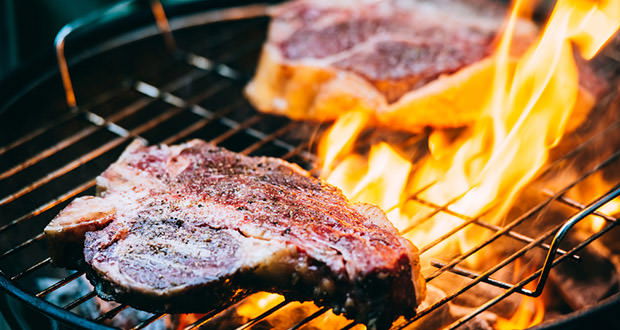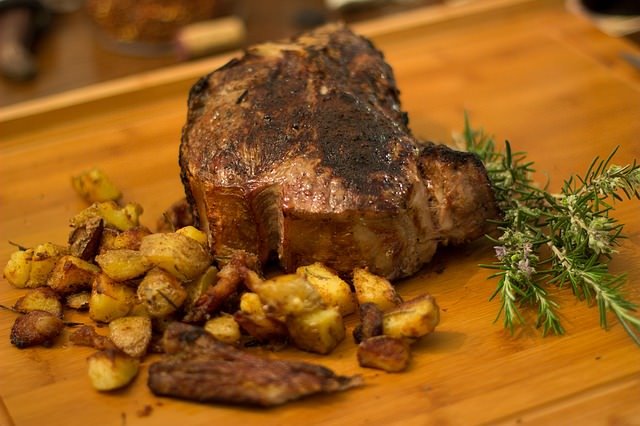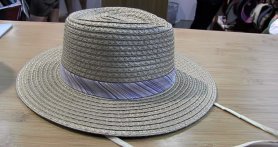

Selecting Your Cut Of Steak is part of our 50 Campfires series, 9 Rules for Flame-Cooking a World-Class Steak, giving you a complete guide to one of the best camping meals imaginable.
Browse the list below to skip to a particular step:
Selecting a Steak
Preparing Steak
Seasoning
Fire, Fuel and Cooking Surface
Cooking Process
Cooking to Temp
Resting
Cutting and Slicing
Saucing and Sides
The most important choice in cooking the perfect steak is selecting your cut of steak. Knowing the ins and outs of each cut will allow you to choose the right one for your intended purpose and ultimately save you a ton of money – so you don’t pay for filet mignon to make steak fajitas. Although could you image how good those fajitas would be?
Tenderness
The most tender steaks come from muscles the cow uses the least. Filets are cut from the tenderloin, which is the long muscle that rides inside the ribs below the spine. This muscle isn’t exerted much, so filets are very tender, but they also have little intramuscular fat and less flavor than more used and fatty muscles.
Thickness
If you prefer your steak medium rare, look for cuts at least 1½ inches thick. That’s the minimum thickness which will deliver an accurate reading to a thermometer probe inserted into its center. Some types of steak like flank steaks, hanger steaks, and skirt steaks will be significantly thinner and require a different style of cooking.
Size
It’s easy to get trapped in the idea every camper needs his or her own steak, but don’t! If you’re looking to deliver a consistent, perfectly medium rare steak, it’s more easily done with larger pieces of meat. So if you have enough diners who want their steak cooked to the same doneness pick bigger steaks, cook whole, and slice for presentation after the meat has rested.
Marbling
The term marbling refers to intramuscular fat. These are the flecks of white showing up in the red part of the meat. The layer of fat around the outside of the muscle should always be removed before doing any high temperature cooking. If you’re going to cook a steak by a low-temperature method, the visible fat will melt rather than burn and help ensure the steak is juicy and tender.
Expense
You can’t escape it. You’re going to get what you pay for when it comes to meat. The most well-marbled and tender steaks are going to cost significantly more than cuts like round steak and skirt steak. If you’re going to serve a steak straight up, it needs to be a good one. If you’re going to marinate it or slice it thin or country fry it then you can go with a less expensive cut and take additional steps to tenderize it.
USDA Grades
USDA stands for United States Department of Agriculture. They recognize three grades of beef:
Prime is the top grade. It has abundant marbling. Only 2-3 percent of all beef is labeled as prime. You’ll typically only find this in gourmet butcher shops and grocers or online. It’s pricey!
Choice is the middle grade. It is very high quality, too, but with a bit less intramuscular fat. It’s usually available at most grocery stores’ meat counters. There is lots of variability in this grade, so ask the meat department manager to point you in the right direction.
Select is the USDA’s lowest grade. Compared to the higher grades side by side, you’ll easily see the difference in the marbling. Select has much less and won’t be as tender or flavorful. These steaks are great for fajitas or steak sandwiches!









